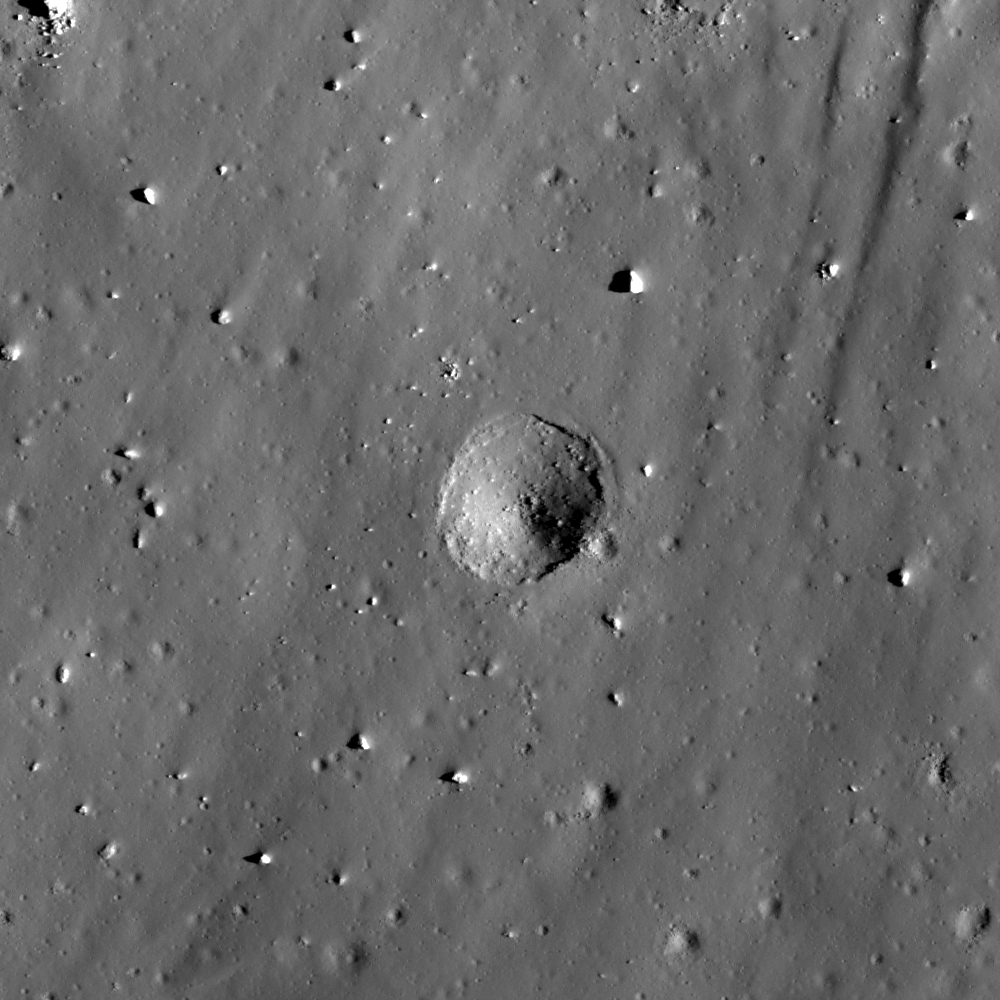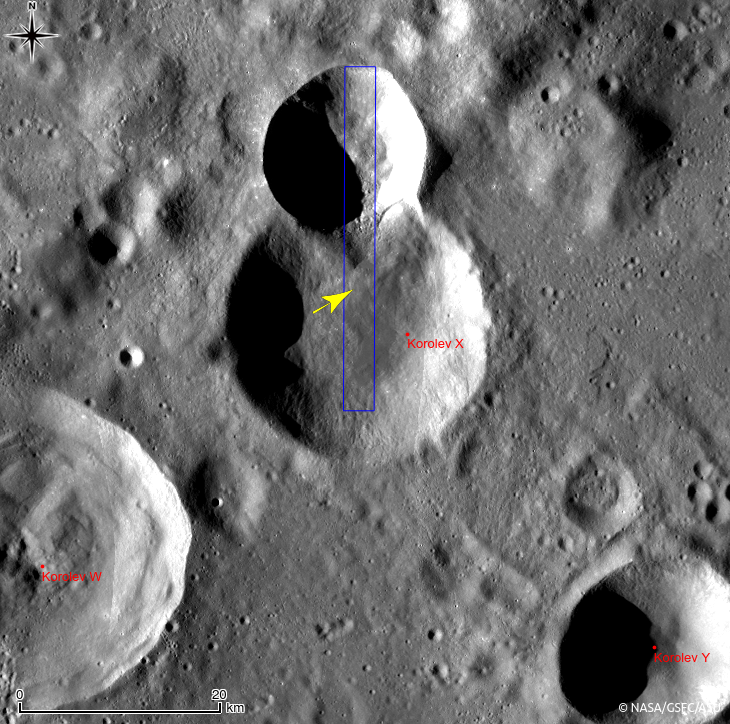
Korolev X is a 25-km crater located at 0.54°N, 200.59°E. As seen in the bottom image, the northern rim of this crater was destroyed by a younger crater about 16 km in diameter. The heat from the impact that formed this younger crater melted a large volume of rock, which flowed down onto the floor of Korolev X, creating a sheet of solidified melt 14 x 5 km across. The opening image highlights a dent in the surface of this melt sheet.
This dent is about 105 meters in diameter. Considering the existence of multiple, similarly-sized (around 100 m in diameter) craters on this melt sheet, this dent is most likely an impact crater even though neither an ejecta blanket nor a raised rim can be clearly recognized. Along the top of the crater wall there appears to be a thin layer of the melt sheet that is exposed and highlighted by the angle of the sun. Below this surface layer no clear layering is observed, implying a rather homogeneous structure. Small craters like this are often observed in impact melt sheets, and why they lack typical features of impact craters (a well-defined raised rim, a thick ejecta blanket) is still not well known. Could these craters have formed when the impact melt was still partially molten?
Explore various strangely shaped craters on this melt sheet in full NAC frame yourself!
Related Posts:
Necho Crater, Scalelike Impact Melts, Impacts on the Melts, Impact Melt Deposits On A Crater Rim
Published by Hiroyuki Sato on 11 October 2012
